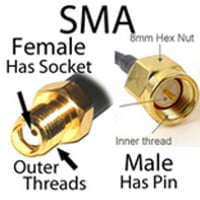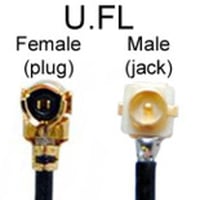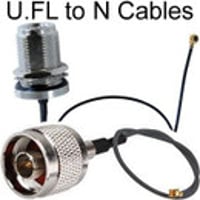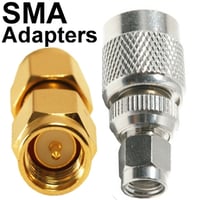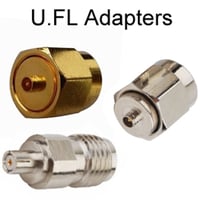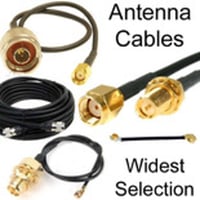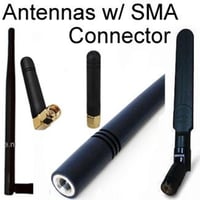SMA to U.FL Cables & Adapters
U.FL to SMA Cables & Adapters for Antennas

Our SMA to U.FL cables' consistently low broadband VSWR, range of frequency band compatibility (from 0GHz to 11 GHz) and 50 Ohms impedance matching, makes them suitable for all the following applications:
- All WiFi standards - 2.4GHz or 5GHz applications: 802.11AC, 802.11N, 802.11G, 802.11B, 802.11A
- Cellular Wireless LTE / 4G, LTEm, GSM / 3G, WiMax, 5G
- IOT (Internet of Things) wireless protocols: Bluetooth, ZigBee, LoRa, M2M, RFID, NB-IoT.
The Coaxial Cable: Data Alliance uses 1.13mm coax for shorter U.FL cables. Typically for longer U.FL cables we use RG174. The 1.13mm diameter and very flexible 1.13 is sometimes a necessity - if the space is very tight inside small cases that house PCBs (Printed Circuit Boards), and mini-PCI wireless cards. A third option is 1.32mm coax, which has the benefits of double-shielding (in the form of two layers of braided sliver-plated copper) for low loss, while at the same time being very thin and flexible.
- U.FL connectors on 1.13 and 1.32 coax snap down more securely and permanently onto the jack
- U.FL connectors on RG174 are prone to popping off the jack, unless they are glued down. If you want RG174 for its low-loss characteristic, we recommend that you try RG174 in your application before making the decision.
- R174 is the thickest coax that can be used with U.FL: It is 3mm in diameter. RG174 is far less flexible than 1.13 and 1.32, but delivers less signal loss (attenuation) than 1.32mm or 1.13mm - though RG174 is not double-shielded.
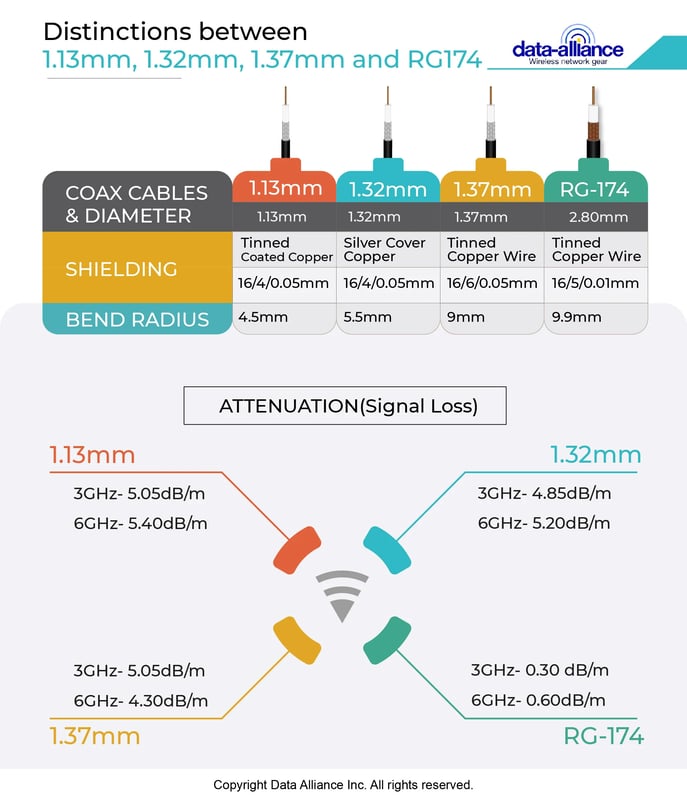
Data Alliance customizes the coax option for our customers, as needed.
We also offer adapters from U.FL to SMA male and female: There is less signal loss when using an adapter than a cable, so an adapter is a better option if it fits with your application.
The mated connection is meant to be semi-permanent after mating, because snapping and unsnapping it several times will cause the female connector to wear out. It would then need to be replaced, along with the attached coaxial cable. Data Alliance offers a tool for inserting U.FL connectors into place.
The male connector is usually soldered directly onto the circuit board as the jack: The jack is small enough to take up as little as 9mm x 9mm of space. The female connector snaps onto the male connector, secured by pressure from the metal snap structure.
The cables' range of frequency band compatibility and 50 Ohms impedance matching, makes them suitable for all the following applications:
- All WiFi standards - 2.4GHz or 5GHz applications: 802.11AC, 802.11N, 802.11G, 802.11B, 802.11A
- Cellular Wireless LTE / 4G, GSM / 3G, WiMax
- IoT wireless: Bluetooth, ZigBee, LoRa

